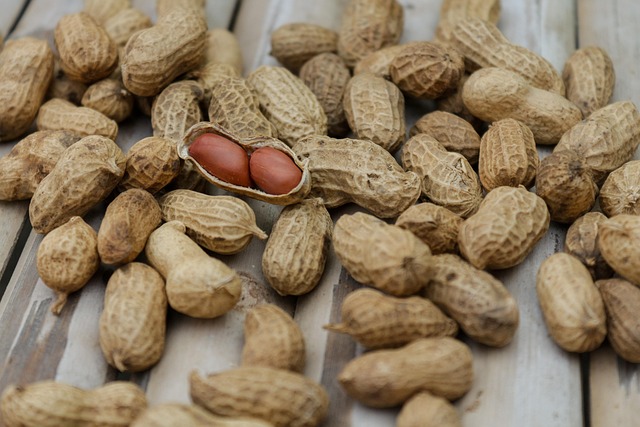When it comes to building a balanced and nourishing diet, the grapefruit stands out as a versatile fruit that blends tartness with a hint of sweetness. Its vibrant hue, refreshing juiciness, and unique flavor profile make it a favorite among health enthusiasts and casual snackers alike. Yet, not every grapefruit is created equal. Choosing the right grapefruit variety can influence not only taste but also the nutritional benefits you receive. Below, we explore the world of grapefruit varieties and how they fit into a healthy lifestyle.
Why Grapefruit Is a Nutritional Powerhouse
Grapefruit is rich in vitamins, minerals, and antioxidants that support a healthy body. One medium grapefruit delivers nearly 100 % of the daily recommended intake of vitamin C, along with vitamin A, potassium, and folate. Its high water content helps maintain hydration, while the soluble fiber—primarily pectin—supports digestion and can aid in lowering cholesterol levels.
Beyond basic nutrients, grapefruit contains a group of flavonoids called naringin and hesperidin. These compounds have been studied for their anti-inflammatory and antioxidant properties, potentially contributing to reduced risk of chronic diseases such as heart disease and certain cancers. Incorporating a variety of grapefruit into your diet may help you reap these benefits while keeping meals interesting.
Key Factors When Selecting a Grapefruit Variety
Choosing the best grapefruit variety for a healthy lifestyle depends on several factors, including flavor preference, seasonal availability, and desired health outcomes. The following points help guide your decision:
- Sweetness vs. Tartness – Some varieties lean toward sweetness, while others are more tart. The choice can influence how you pair grapefruit with other foods or use it in recipes.
- Texture and Juiciness – The thickness of the rind and the juiciness of the flesh vary across varieties, affecting ease of consumption and presentation.
- Seasonality – Grapefruit varieties have peak seasons; selecting fruits at their prime enhances flavor and nutrient density.
- Compatibility with Diet – Certain varieties pair well with low‑carb, vegan, or Mediterranean diets, making them ideal for specific lifestyle choices.
Common Grapefruit Varieties and Their Unique Traits
Below are some of the most widely available grapefruit varieties, each with distinct characteristics that can complement different dietary goals.
- Pink Pearl – This variety is celebrated for its mellow, almost sweet flavor and striking pink interior. The thick rind makes it slightly more resilient during transport, ensuring it arrives fresh. Pink Pearl is often chosen by those who enjoy a gentle citrus experience and want a fruit that blends well in smoothies and fruit salads.
- Ruby Red – Known for its deep crimson flesh and slightly sweeter taste, Ruby Red grapefruit offers a subtle tang that balances its rich color. Its thicker, darker rind provides a pleasant crunch when sliced. The ruby hue also signals higher anthocyanin levels, antioxidants linked to cardiovascular health.
- White Red – A popular choice for its bright, bright-white flesh and a sharp, refreshing tartness. White Red grapefruits have a thinner rind, making them easier to peel. They are often preferred by athletes and those on calorie‑controlled diets due to their lower natural sugar content relative to sweeter varieties.
- Orange – The Orange grapefruit, also known as “Pink Orange,” delivers a pronounced sweet‑tart flavor profile. Its distinctive orange interior and rind make it a festive addition to brunch platters. For those who enjoy bold citrus flavors, Orange grapefruits are a go‑to option.
- Citrus (Hybrid) – The Citrus hybrid combines characteristics of pink, ruby, and white varieties, creating a balanced sweet‑tart experience. Its thick rind and juicy flesh make it suitable for both eating raw and using in culinary applications such as marinades, salsas, and cocktails.
How to Pair Grapefruit Varieties with Lifestyle Goals
Choosing the right grapefruit variety can amplify your health plan. Consider the following pairings:
- Weight Management – Opt for White Red or Pink Pearl varieties. Their lower natural sugar and high fiber content support satiety while keeping calorie intake moderate.
- Heart Health – Ruby Red and Orange varieties are rich in anthocyanins and flavonoids that have been associated with improved lipid profiles. Incorporating these into a Mediterranean‑style diet can enhance cardiovascular benefits.
- Immune Support – All varieties are high in vitamin C, but Pink Pearl and Orange provide slightly higher concentrations. A daily intake of 1–2 servings supports immune resilience.
- Digestive Wellness – The soluble fiber in any grapefruit variety aids digestion. Pairing with probiotic foods, such as yogurt or kefir, can further promote gut health.
- Energy Boost – The natural sugars and electrolytes (potassium, magnesium) in all grapefruit varieties provide a quick, healthy energy lift, ideal for pre‑or post‑workout nutrition.
Harvest Timing and Seasonal Availability
Seasonality plays a crucial role in maximizing flavor and nutrient density. The main grapefruit harvest seasons in the United States typically run from late winter to early summer. During these months, fruit reaches optimal sweetness and texture.
When selecting a grapefruit variety, it is wise to check local growers’ calendars or farmers’ markets. Seasonal fruit not only tastes better but often carries fewer chemicals and higher nutrient levels, thanks to reduced need for preservatives during shipping.
Practical Tips for Buying and Storing Grapefruit Varieties
Here are simple strategies to ensure you always have the freshest fruit on hand:
- Check for firmness – A good grapefruit should feel firm but yield slightly to gentle pressure. Avoid fruits with soft spots or discoloration.
- Inspect the rind – A smooth, even rind indicates freshness. Rough or blemished skin may signal overripe fruit.
- Store properly – Keep grapefruits in the refrigerator’s crisper drawer to extend shelf life. Properly stored, they can last up to a week.
- Consume promptly – Fresh fruit delivers the highest nutrient content. Consume within a few days of purchase for maximum benefit.
Creative Ways to Incorporate Grapefruit Varieties into Daily Meals
Beyond eating grapefruits as a snack, they can enrich breakfast, lunch, dinner, and even desserts. Below are suggestions for using different varieties creatively.
- Breakfast Bowls – Add diced Orange grapefruit to a bowl of oatmeal topped with almonds and a drizzle of honey. The tartness cuts through the sweetness, creating a balanced flavor.
- Salads – Combine pink grapefruit segments with spinach, avocado, and a light citrus vinaigrette. The natural juiciness provides a burst of flavor and keeps the salad fresh.
- Protein Pairings – Use a squeeze of white red grapefruit over grilled chicken or fish to add acidity and brightness.
- Stir‑Fries – Incorporate ruby red grapefruit slices in a quick vegetable stir‑fry for a surprising twist that adds texture and color.
- Healthy Desserts – Mix grapefruit pulp with Greek yogurt, a touch of maple syrup, and chopped pistachios for a creamy, low‑calorie dessert.
Addressing Common Concerns: Grapefruit and Medications
One frequently discussed topic is the interaction between grapefruit and certain prescription medications. Certain compounds in grapefruit, particularly furanocoumarins, can affect the metabolism of drugs such as statins, beta‑blockers, and some anti‑arrhythmic agents. For individuals on these medications, it is advisable to consult a healthcare provider about grapefruit consumption. Some people can safely enjoy small portions of specific varieties, while others may need to limit intake or avoid grapefruit entirely.
Conclusion: Making the Most of Your Grapefruit Variety Choices
Incorporating a thoughtfully chosen grapefruit variety into your diet can elevate both flavor and nutrition. Whether you favor the gentle sweetness of Pink Pearl, the bold tartness of White Red, or the deep, antioxidant‑rich Ruby Red, each variety offers unique benefits that align with a healthy lifestyle. By paying attention to seasonal availability, proper storage, and individual health needs, you can enjoy grapefruit as a versatile, nutrient‑dense component of a balanced diet.
Remember that variety itself—both in terms of grapefruit types and overall food choices—keeps meals exciting and supports comprehensive nutrition. As you experiment with different grapefruit varieties, observe how each one influences your taste preferences, energy levels, and overall well‑being. Happy snacking!




